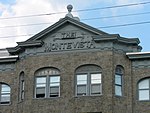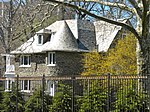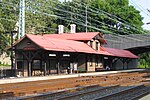Overbrook School for the Blind
1832 establishments in PennsylvaniaEducational institutions established in 1832Overbrook, PhiladelphiaPennsylvania building and structure stubsPrivate schools in Pennsylvania ... and 2 more
Schools for the blind in the United StatesSchools in Philadelphia

The Overbrook School for the Blind, established in 1832, is in Philadelphia. Its present site, in the city's Overbrook neighborhood, was acquired in 1890. The school produced the first embossed book in America (the Gospel of Mark) and the first magazine for the blind. It is one of four approved charter schools—along with the Pennsylvania School for the Deaf, the Western Pennsylvania School for Blind Children, and the Western Pennsylvania School for the Deaf—in Pennsylvania for blind and deaf children.
Excerpt from the Wikipedia article Overbrook School for the Blind (License: CC BY-SA 3.0, Authors, Images).Overbrook School for the Blind
Marlyn Road, Philadelphia
Geographical coordinates (GPS) Address Nearby Places Show on map
Geographical coordinates (GPS)
| Latitude | Longitude |
|---|---|
| N 39.982932 ° | E -75.248853 ° |
Address
Overbrook School for the Blind
Marlyn Road
19151 Philadelphia
Pennsylvania, United States
Open on Google Maps








